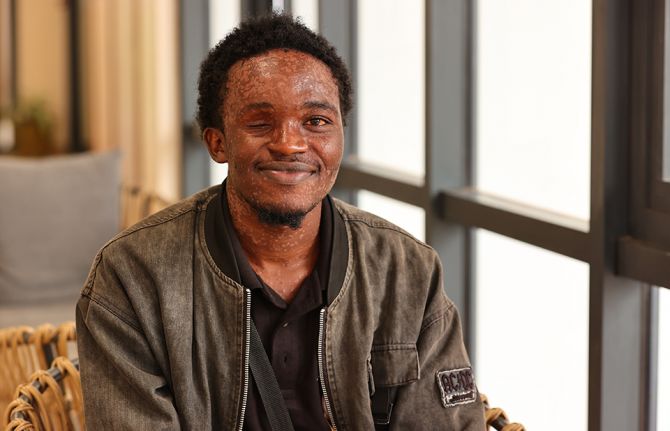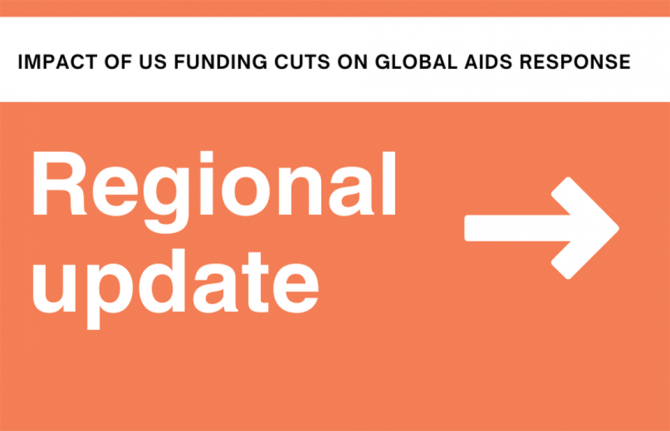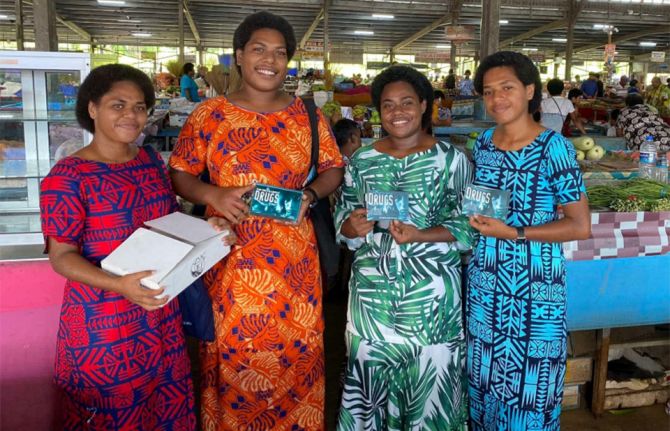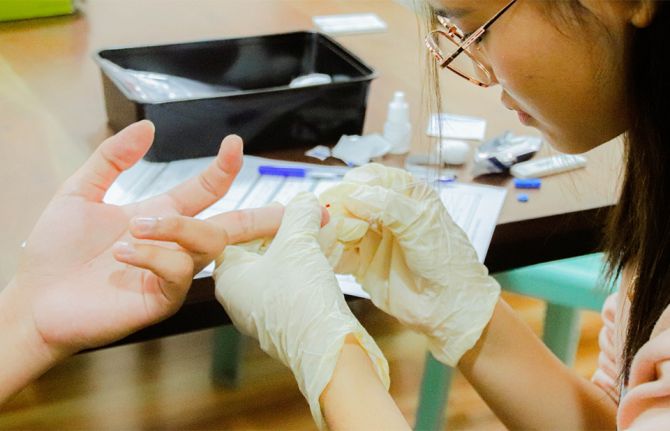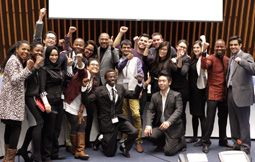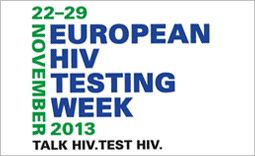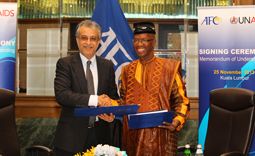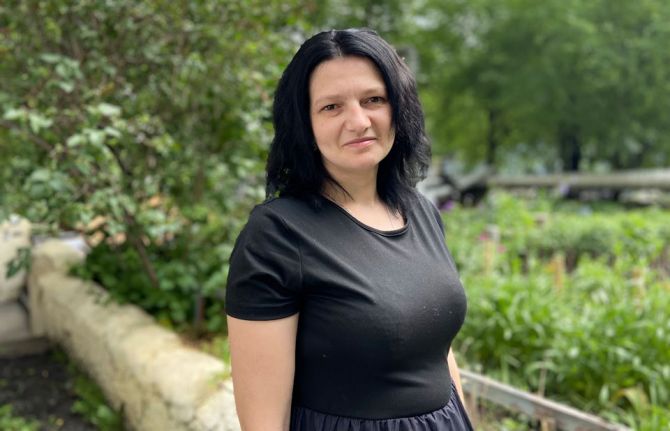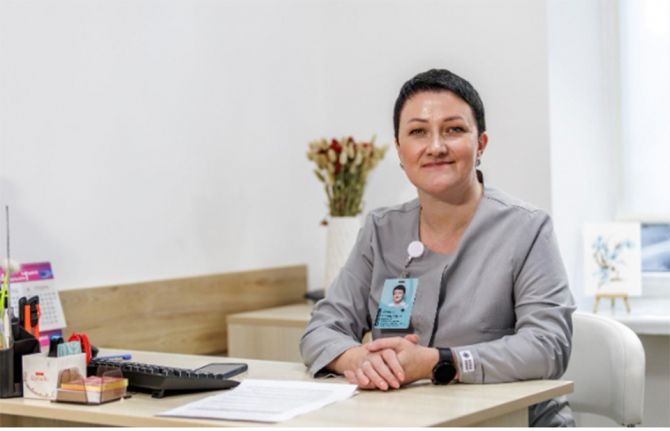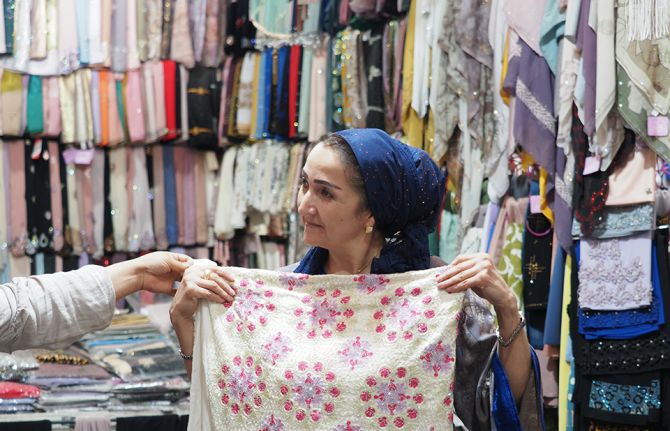
Feature Story
Highly vulnerable transport sector needs effective HIV programmes
11 July 2011
11 July 2011 11 July 2011
Credit: North Star Alliance
Mobile populations, especially transport workers, are highly vulnerable to HIV. Many truck drivers and other mobile workers spend large amounts of time away from their families and can have multiple sexual partners. These include sex workers and others living along the highway and around truck stops.
The International Labour Organization (ILO), International Transport Workers’ Federation, International Organization for Migration, UNAIDS and Health Economics and HIV and AIDS Research Division organized a workshop in Johannesburg from 29-30 March 2011 to review current evidence related to HIV and the transport sector in southern Africa and to identify gaps and research agendas to strengthen evidence.
“We need to approach the transport sector in an integrated way that cuts across borders,” said Vic Van Vuuren, Director, ILO, East and Southern Africa.
The workshop brought together stakeholders operating in the transport sector in the most HIV affected regions of southern Africa. Participants included transport ministries, National AIDS Councils, civil society, development partners and representatives of the related employers’ and workers’ organisations, from Botswana, Kenya, Malawi, Mozambique, Namibia, South Africa, Kenya, Zimbabwe, Zambia, and Tanzania.
Transportation is integral to development in southern Africa. At a macro-economic level, countries’ ability to import and export goods and move economic inputs and outputs is a key element of GDP growth. At a city and community level, people’s ability to move and trade crucially affects their income and livelihood. There is ample evidence that HIV is impacting negatively on the transportation sector in the region.
A key part of the workshop offered participants and stakeholders, grouped according to their country of origin, to collectively devise strategic action frameworks. Each country agreed to a set of actions that they will take forward within the next two years to ensure progress in the areas of HIV and transportation. This was done in light of the international labour standard, 2010 ILO Recommendation concerning HIV and AIDS and the World of Work.
Conclusions and findings:
Transport sector employees are not the only demographic group that is vulnerable to health issues. Communities and traders that live and operate along transport corridors face health risks as well. According to the participants, there is a need for both a conceptual and pragmatic focus on vulnerable places instead of vulnerable groups.
Evidence shows that HIV programmatic health centres have been better received by end users when the term ‘Wellness Centre’ is used instead of ‘HIV’ or ‘AIDS Centres’. The adoption of a more general term avoids feeding the stigma and discrimination associated with HIV. It also shifts the focus from solely responding to HIV to improving the broader health and general well-being of clients.
Participants also identified the need to strengthen current efforts to unify customs protocols and avoid unnecessary delays at border posts. Delays at border posts increase the time that transport sector workers spend idle and away from their families —increasing their likelihood of engaging in high-risk behaviour.
The engagement of communities in the planning, design and implementation phases of projects was highlighted as key to ensuring that programmes will be well received and that they will be effective in the long-term.
Related

Feature Story
First meeting of BRICS health ministers brings new leadership to global health
11 July 2011
11 July 2011 11 July 2011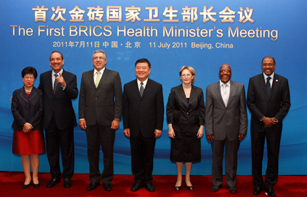
L to R: Director-General of WHO Margaret Chan, Minister of Health and Family Welfare India Ghulam Nabi Azad, Minister of Health Brazil Alexandre Padilha, Minister of Health China Chen Zhu, Deputy Minister of Health and Social Development Russia Veronika Skvortsova, Minister of Health South Africa Aaron Motsoaledi, UNAIDS Executive Director Michel Sidibé.
Credit: UNAIDS
Universal access to medicines was a key topic of discussion at a meeting today of health ministers from Brazil, Russia, India, China and South Africa (BRICS) in Beijing, China. The meeting, hosted by the Government of China, aimed to identify opportunities for BRICS countries to promote wider access to affordable, quality-assured medicines, with a view to reaching the Millennium Development Goals and other public health challenges.
“The five BRICS countries are bringing a new voice, a new perspective and new solutions to today’s global challenges,” said UNAIDS Executive Director Michel Sidibé, who participated in the First BRICS Health Ministers’ Meeting, together with WHO Director-General Margaret Chan. “It is a voice with incredible economic, technological and innovative strength behind it and, at the same time, a voice intimately connected to the needs and interests of the developing world,” he added.
Brazil, Russia, India, China and South Africa are home to 40% of the global population and nearly one third of all people living with HIV in the world. While the five BRICS countries have made significant progress in expanding HIV prevention and treatment services for their populations, the goal of universal access remains a critical challenge: In four of five BRICS countries, for example, only one third of people who need HIV treatment are receiving it.
A “Beijing Declaration,” issued on 11 July and signed by ministers of health from the five BRICS countries, underscored the importance of technology transfer among the BRICS countries, as well as with other developing countries, to enhance their capacity to produce affordable medicines and commodities. The Declaration also emphasized the critical role of generic medicines in expanding access to antiretroviral medicines for all.
Access to affordable medicines is a fundamental element to bring health services to scale, especially for the poor
Chen Zhu, China’s Health Minister
By signing the Declaration, leaders committed to working together to preserve the provisions contained in the Doha Declaration on TRIPS and Public Health—provisions that allow for countries to overcome intellectual property rights restrictions on medicines in the interest of public health.
“Access to affordable medicines is a fundamental element to bring health services to scale, especially for the poor,” said Chen Zhu, China’s Health Minister.
The five BRICS countries face similar health challenges, including a double burden of communicable and non-communicable diseases, inequitable access to health services and growing health care costs. Through collective action and influence, the BRICS coalition promises to deliver cost-effective, equitable and sustainable solutions for global health.
Speeches
Speeches
Multimedia
Multimedia

Feature Story
China commits to UNAIDS vision of zero new HIV infections, zero discrimination and zero AIDS-related deaths
11 July 2011
11 July 2011 11 July 2011
UNAIDS Executive Director Michel Sidibé (left) and China’s Vice Premier Li Keqiang.
Credit: Xinhua News Agency
During an extended country visit to China UNAIDS Executive Director Mr Michel Sidibé met with China’s Vice Premier Li Keqiang to discuss how China is scaling-up their response to HIV. In their meeting, Mr Li stressed that Getting to Zero—UNAIDS strategy calling for zero new HIV infections, zero discrimination and zero AIDS-related deaths worldwide––constitutes a guiding vision for China’s national HIV strategy.
Mr Li, who is also the Chair of the State Council AIDS Working Committee, noted that the “Three Zeros” are key objectives for China’s response to HIV and that China is committed to turning the vision into a reality. “The Three Zeros can be achieved. We are mobilizing a movement to achieve this,” said the Vice Premier during discussions with Mr Sidibé. “I am committed and the government is committed to making this happen.”
The Three Zeros can be achieved. I am committed and the government is committed to making this happen.
Vice Premier of China Li Keqiang
There are around 740 000 people living with HIV in China, which has a national HIV prevalence of 0.06%. However according to government figures, approximately 5% of men who have sex with men in China are living with HIV—88 times higher than the national average. Another key population at higher risk are people who inject drugs, which in 2009 accounted for more than 24% of new HIV infections.
Vice Premier Li noted that China has made important progress in its response to HIV, but that the situation remains serious and new ideas and approaches will be necessary for success. “The challenges remain” said Mr Li. “HIV infections due to sexual transmission and drug use need to be reduced. More needs to be done in these fields.”
In recent years, China has taken bold, evidence-informed action to strengthen its response to HIV
UNAIDS Executive Director Michel Sidibé
Mr Li also stressed the importance of full community participation in the HIV response and of the government’s commitment to facilitating this participation. According to Mr Li, community-based organisations play an irreplaceable role in HIV prevention and in eliminating discrimination. “The government will provide powerful support to these organisations,” he said.
During the meeting, Mr Sidibé commended China’s strong and sustained leadership in its response to HIV, as well as its adoption of new approaches. “In recent years, China has taken bold, evidence-informed action to strengthen its response to HIV,” said Mr Sidibé. “Whether it is China’s large-scale roll-out of methadone maintenance treatment, nationwide scale-up of antiretroviral treatment or strong investment in preventing mother-to-child transmission of HIV, China is at the forefront.”

Feature Story
New city-based HIV strategy in China to address HIV infection among men who have sex with men
09 July 2011
09 July 2011 09 July 2011
Credit: Curt Carnemark/World Bank
Government officials in Chengdu, China, hosted a workshop today to address the city’s rapidly-growing HIV epidemic among men who have sex with men (MSM). Participants in the workshop discussed a new five-year strategy that calls for a dramatic scale-up in the coverage of HIV prevention and treatment for the MSM population in Chengdu and promotes the participation of community-based organizations in the city’s response to HIV.
“Cities have a critical role to play in the AIDS response,” said Mr Yang Xiaoguang, Director of Chengdu Health Bureau, speaking at the workshop on 9 July. “By working to build a strong, multi-sectoral response in Chengdu, with meaningful community participation, we can scale up coverage of prevention, treatment and care services among MSM and halt the spread of HIV in our city,” he added. Also joining the workshop were senior officials from China’s Ministry of Health, government officials from Sichuan Provincial Health Bureau, representatives from civil society and Michel Sidibé, Executive Director of the Joint United Nations Programme on HIV/AIDS (UNAIDS).
According to government figures, approximately 5% of men who have sex with men in China are living with HIV—88 times higher than the national HIV prevalence of 0.057%. In the city of Chengdu, more than 10% of the MSM population is living with HIV. Across China, HIV prevalence is generally higher in cities and urban areas, reaching almost 20% in some south-western cities.
Cities are at the heart of China’s development and progress, and must remain at the forefront of its HIV response
Michel Sidibé, Executive Director of UNAIDS
“Cities are at the heart of China’s development and progress, and must remain at the forefront of its HIV response,” said Mr Sidibé. “Through bold action to address HIV among men who have sex with men, cities can lead the way to achieving the UNAIDS vision of zero new HIV infections, zero discrimination, zero AIDS-related deaths. We hope that over the next year, many more Chinese cities will implement city-based MSM strategies,” he added.
Approximately one in three new HIV infections in China is among men who have sex with men. However, according to government figures, less than half of the MSM population has access to HIV testing services and less than 15% of HIV-positive MSM who need treatment are receiving it. Chengdu’s new strategy underscores the critical role that community-based organizations can play in reaching men who have sex with men and other populations at increased risk of HIV infection.
Tong Ge, Coordinator of China’s MSM Health Forum and a participant in the Chengdu workshop, noted the importance of ensuring strong cooperation between government and civil society. “By building on the experiences of cities like Chengdu, which already have well developed AIDS responses, we can help to promote multi-sectoral collaboration on an equal, orderly basis and strengthen the response to HIV nationwide,” said Mr Tong. “The next step will be to implement similar strategies in other cities nationwide,” he added.

Feature Story
UNAIDS Executive Director commends the Government of China for its leadership in the HIV response
08 July 2011
08 July 2011 08 July 2011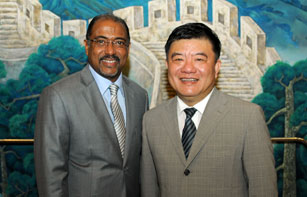
(from left) Executive Director of UNAIDS Michel Sidibé with China's Health Minister Dr Chen Zhu.
Credit: UNAIDS/AFP
In an official meeting today in Beijing with Dr Chen Zhu, China’s Minister of Health, UNAIDS Executive Director Michel Sidibé praised China’s commitment and leadership in the national response to HIV. Mr Sidibé commended the Government of China for its high-level participation in the recent UN General Assembly High Level Meeting on AIDS and for its strong support of Getting to Zero—a UNAIDS strategy that calls for zero new HIV infections, zero discrimination and zero AIDS-related deaths worldwide.
Over the past decade, China’s AIDS response has achieved significant results. Between 2003 and 2010, the number of people receiving antiretroviral treatment in China increased from about zero to more than 86 000, representing more than 40% coverage. Nearly 8000 clinics throughout the country now offer voluntary HIV testing and counselling free of charge.
In recent years, China has also put in place HIV programmes for populations at higher risk of HIV infection, such as sex workers and people who inject drugs. Following the roll out of a major methadone maintenance therapy programme in 2004, 700 clinics are providing HIV treatment and prevention services nation-wide to nearly 300 000 people.
An urgent need for city-based approaches
During his meeting with Dr Chen, Mr Sidibé noted with concern the alarming growth of China’s HIV epidemic among men who have sex with men (MSM), particularly in urban areas. Mr Sidibé recommended that China treat the development and implementation of a national MSM strategy as a top priority in its AIDS response.
To ensure a successful national response to HIV, urgent action is needed in metropolitan areas
Michel Sidibé, UNAIDS Executive Director
According to government figures, an estimated one in three new HIV infections in the country are among men who have sex with men, and a majority of these infections occur in cities. Approximately 5% of MSM in China are living with HIV—88 times higher than the national HIV prevalence of 0.057%. In many Chinese cities, more than 10% of the MSM population is living with HIV.
“To ensure a successful national response to HIV, urgent action is needed in metropolitan areas,” said Mr Sidibé, who is on a five-day official visit to China. “Providing HIV services for men who have sex with men must be at the heart of China’s city-based response to the epidemic,” he added.
In his meeting with Dr Chen, Mr Sidibé called on the Chinese government to roll out city-wide MSM action plans in Chinese mega-cities with populations exceeding 10 million by the end of 2012.
Community participation critical to an effective HIV response
The importance of community participation was a key theme during the Executive Director’s meeting later in the day with Mr Dou Yupei, China’s Vice Minister of Civil Affairs.Many community-based organizations are already operating in China’s cities and achieving important results in local epidemics. However, to participate effectively and sustainably in the AIDS response, they must be allowed to register legally and gain access to funding.
In his meeting with the Vice Minister of Civil Affairs, the UNAIDS Executive Director noted the important guidance recently issued by China’s State Council, which called on relevant departments to facilitate the legal registration of social organizations—an important step forward for China’s HIV response.
Mr Sidibé also commended the actions taken by the Ministry to expand and increase the scope of social welfare benefit payments for children impacted by the AIDS epidemic—actions, he said, that demonstrate the commitment of the Chinese government to ensuring the well-being of people affected by HIV and AIDS.

Feature Story
Sex workers on the frontline of the AIDS response in India
07 July 2011
07 July 2011 07 July 2011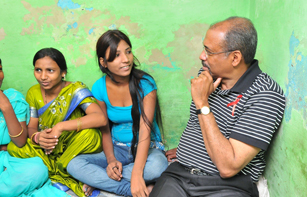
UNAIDS Executive Director Michel Sidibé listened to the experiences of sex workers in East Delhi during his official visit to India on 6 July 2011.
Credit: UNAIDS
In a densely packed sub-urban township far away from Lutyen’s Delhi, at a small house encased in a cacophony of concrete flats, about 20 women engaged in sex work got together to share their experiences of the AIDS response. “How do we appear to you,” asked Ms Munni to the visiting UNAIDS Executive Director Michel Sidibé. “Like me, like any one of us,” he replied, in turn getting wide beaming smiles from all the women, for being accepted as part of society.
Mr Sidibé’s was interacting with sex workers on 6 July, just weeks after United Nations Member states adopted an historic political declaration on AIDS in which they recognized explicitly for the first time that prevention strategies inadequately focus on populations at higher risk—specifically men who have sex with men, people who inject drugs and sex workers. Much of the sex work in East Delhi is not run through organized brothels but operates on the streets and in homes. This nature of sex work is not unique to Delhi, but a regular feature in most cities and towns of India, making it difficult to reach men and women engaged in sex work with HIV prevention and treatment services.
Outreach programme supports sex workers
With no support structure, women sex workers often face violence at the hands of their male clients. “Sometimes our clients take us to their rooms and invite their other friends over. We are forced to have sex with them and drink alcohol. When we resist we are beaten up,” said Ms Reshma. She has been a sex worker for the past three years and now also works as a peer educator at the sex work outreach programme run by the Society for Service to Voluntary Agencies (SOSVA). Ms Reshma’s role as a peer educator involves providing health education and counselling as well as promoting condom use and facilitating health referrals to her fellow sex workers. The organization provides HIV prevention and treatment services for nearly 1 000 sex workers.
I am nineteen and just passed out of school. I sell sex, because I have to take care of my three younger sisters. My job in a call centre did not fetch me enough.
Ms Reenu, who works as a sex worker in East Delhi
Condom use in the project area has risen, and rates of sexually transmitted infection have fallen in the last two years. “Most of our clients ask to use condoms. Those who don’t, we convince them to do so,” said Ms Reshma. What if the clients offer more money for sex without use of condoms? “We cannot risk our future lives for the sake of a thousand rupees [approx. US$ 20] more,” Ms Munni states emphatically.
The sex workers have about ten clients a week, and often use a network of brokers to obtain their clientele. These brokers retain about 50%-60% of the fees charged to the client. “Sex workers find it safe to operate in my house as I am able to protect their identity and also provide a safe space to have sex for the women—as well as the clients,” said Ms Lali, a broker who also sells sex herself out of her residence.
You are at the frontline of the AIDS response and with your support we will reach our vision of zero new HIV infections, zero discrimination and zero AIDS-related deaths.
Michel Sidibé, UNAIDS Executive Director
Most of the sex workers are married and many of their partners either do not know about their wives involvement in sex work, or remain silent. “I am sure he knows about, but to keep the family peace he is quiet about it,” said Ms Shahana. “I am nineteen and just passed out of school. I sell sex, because I have to take care of my three younger sisters. My job in a call centre did not fetch me enough,” said Ms Reenu to Mr Sidibé.
Changing nature of sex work
The nature of sex work has changed rapidly in the area with the increased use of mobile phones by women and brokers to sell sex. “Providing prevention and treatment services have become difficult as we cannot easily identify the women anymore,” said Ms Nazish Musthafa, the Progamme Manager of the outreach project. “Even when we make contact, we often lose them to follow up as they keep changing their mobile phones to avoid harassment and violence from past clients.”

The Society for Service to Voluntary Agencies provides HIV prevention and treatment services for nearly 1000 sex workers.
Credit: SOSVA
Another evolving trend is the entry of school girls into sex work. Most of the peer educators in this project counsel girls, but are often helpless to stop them from being exploited. “There is now a new trend—sex work for lifestyle,” said Mr Shalabh Mittal, from an agency that provides technical support to organizations involved in AIDS programmes in Delhi State. “Many young women are entering into sex work as choice and reaching them with HIV prevention services is proving to be a challenge.”
Commending SOSVA and the sex workers for their contribution to the AIDS response Mr Sidibé said, “You have given dignity and respect to women. You are at the frontline of the AIDS response and with your support we will reach our vision of zero new HIV infections, zero discrimination and zero AIDS-related deaths.”
Civil society role
Later in the day Mr Sidibé held meetings with representatives of civil society and the pharmaceutical industry. At the meeting with civil society organizations, they called for UNAIDS support in ensuring that the next national AIDS plan is evidence-informed and inclusive of the needs of communities. Recognizing that the next plan will determine the course of the epidemic in India, Mr Sidibé promised to provide necessary technical support and high level advocacy support.
Future of pharmaceutical industry
At an interactive forum organized by Federation of Indian Chambers of Commerce and Industry (FICCI), members from pharmaceutical industry, government and civil society highlighted the need to ensure that India remains a reliable supplier of quality generic drugs. Mr Sidibé urged for innovation in development of new drugs. He emphasized that the demand for HIV treatment will grow as more people become eligible for treatment and choose to use Treatment for Prevention.
India’s policies will determine, not just the course of the epidemic in India, but also in Africa
Michel Sidibé, UNAIDS Executive Director
Commenting on the changing landscape of the Indian pharmaceutical industry Mr D.G. Shah, President of the Indian Pharma Alliance and Co-Chairman, FICCI Pharma Committee said, “We need holistic approach to understand the threats to Indian Pharmaceutical Industry comprising global forces, political pressures, MNC’s acquisitions and blind imitation of regulatory requirements of developed nations.” He called for trade agreements to be balanced and for technical support in helping developing countries in using TRIPS flexibilities and negotiating fair trade agreements. “Most of the developing countries face constrains of institutional framework to operationalize the policies e.g. lack of operational guidelines for practicing compulsory license. Apart from Free Trade Agreements, there are many other non-tariff barriers for generic drugs such as pressures for adoption of ISE guidelines for drug regulatory approval,” Mr Shah added.
“The Competition Commission of India will closely watch the domestic pharma industry and we will not allow anyone to create dominance and exclusivity in Indian markets, including pharmaceuticals,” said Ms. Renuka Jain Gupta, the Director of the Competition Commission of India.
Wrapping his trip to India Mr Sidibé said, “India is now poised to be a major player in the global AIDS response. India’s policies will determine, not just the course of the epidemic in India, but also in Africa.”

Feature Story
UN Secretary-General Ban Ki-moon launches annual progress report on the Millennium Development Goals
07 July 2011
07 July 2011 07 July 2011
MDG Report 2011
On 7 July, United Nations Secretary-General Ban Ki-moon launched the annual progress report on the Millennium Development Goals (MDG), the MDG Report 2011, shining a spotlight on where progress is being made and where stronger efforts are urgently needed. The report presents the latest statistics on each of the Goals, globally and regionally, collected through more than 25 UN and international agencies.
This year's report shows that the world is on track to reducing the proportion of people living in extreme poverty by half. It also shows that some developing countries such as Burundi, Madagascar, Rwanda, Togo and Tanzania have achieved, or nearly achieved, the goal of sending all children to primary school. On the other hand, 2.6 billion people still live without access to a toilet or latrine, almost a billion people go hungry every day, and more than 350 000 women die from complications of pregnancy or child birth each year.
Investments in preventing and treating HIV are yielding results
The report highlights that new HIV infections are declining steadily—between 2001 and 2009 the HIV incidence rate declined by nearly 25% worldwide—and that, thanks to increased funding and the expansion of major programmes, the number of people receiving antiretroviral therapy for HIV increased 13-fold from 2004 to 2009.
The publication also notes that women and young people are especially vulnerable to HIV with young people (aged 15 to 24) accounting for 41% of new infections among those aged 15 or older and according to UNAIDS, young women aged 15-24 account for 26% of all new infections globally. The MDG report emphasizes the need for improved comprehensive and correct knowledge of HIV among young men and women in developing regions
According to the new report, more children orphaned by AIDS in sub-Saharan Africa are now in school, increasing their chances of receiving protection and support. The publication also notes a steady progress being made in reducing the risk of HIV in newborns.
The Secretary-General is in Geneva to give a keynote address at the high-level segment of the 2011 substantive session of Economic and Social Council (ECOSOC).
External links
External links
Publications
Publications
Related

Feature Story
Bipartisan Indian political leadership pledges to sustain India’s successful AIDS response
04 July 2011
04 July 2011 04 July 2011
L to R: Oscar Fernandes, Member of Parliament and President of the Parliamentary Forum, Sonia Gandhi, Chair of the United Progressive Alliance, Dr Manmohan Singh, Prime Minister of India, Gulam Nabi Azad, Minister of Health and Family Welfare, Michel Sidibé, Executive Director of UNAIDS.
Credit: UNAIDS/Naresh
India’s AIDS response has transformed in the last ten years, backed by strong bipartisan political support for its AIDS response and a vibrant civil society movement. New HIV infections in the country have fallen by more than 50% in the last decade. Antiretroviral treatment is now being accessed by more than 400 000 people living with HIV. The Government of India is now rolling out free second line antiretroviral treatment to people in need. Yet the HIV prevention and treatment gap in India remains high.
“There is no room for complacency, even as we are showing success in AIDS response,” said Dr Manmohan Singh, Prime Minister of India, while inaugurating the National Convention of Parliamentarians, Legislators and elected representatives of urban and rural bodies of India. “Let us not forget that there are 24 lakh people [2.4 million] living with HIV in India. There should be no let-up in our efforts to provide treatment to people living with HIV and prevent others from getting infected,” he added.
There is no room for complacency, even as we are showing success in AIDS response
Dr Manmohan Singh, Prime Minister of India
Welcoming participants to the convention, India’s Health minister Gulam Nabi Azad drew attention to the growing need for increasing domestic investments for the AIDS response in the wake of reduced international funding for AIDS. UNAIDS’ estimates show that nearly one third of India’s expenditure is currently funded from domestic sources. “Many international donors are reducing their assistance to India or stopping them all together. We cannot afford to have constrained investments for HIV as we hope to expand our programme,” said Mr Azad. “I urge the Government of India to increase its domestic investments.”
Praising India’s bipartisan political support for the AIDS response, the Chair of the ruling United Progressive Alliance Sonia Gandhi called for a sustained focus of the AIDS response in providing universal access to medicines and health across the country. “Though India has been able to reduce the new infections by 50% in last 10 years, there is no room for complacency and efforts must be sustained and consolidated for long term gains,” said Mrs Gandhi. “AIDS is not a health issue alone rather it involves all aspects of social, economic and developmental facets. We can develop strategies, programmes, thrusts and priorities but let us not forget that these have to reach men, women and children who, almost invariably, belong to the most disadvantaged and deprived sections of society.”
Speakers also recalled the pivotal role played by India in expanding universal access to HIV treatment to people living with HIV across the world, especially in Africa. Speaking at the opening of the National Convention, UNAIDS Executive Director Michel Sidibé called on India to ensure that the use of flexibilities under TRIPS be maintained to ensure that access to affordable and quality medicines is assured in the long term.

Dr Manmohan Singh, Prime Minister of India opening the National Convention with the traditional “lighting of the lamp” along with Mrs Sonia Gandhi, Chairperson of the United Progressive Alliance and Mr Michel Sidibé, UNAIDS Executive Director.
Credit: UNAIDS/Naresh
Recalling the pivotal role played by India’s leaders in ending social inequity and social injustice he called for ending the global dichotomy of access to HIV services between the rich and poor. “There is no reason why the value of a life in the north should be different from people in the south,” said Mr Sidibé.
“I want to study and rise in life. I want to become a social worker and help other children and people living with HIV,” said Ms Romana, a young person living with HIV, to the Indian Prime Minister.
Outlining the various challenges still faced by the AIDS response, the Indian Prime Minister showed particular concern for stopping new HIV infections among children. “Our efforts to stop HIV amongst children are being hampered by the low level of institutional deliveries by pregnant women in India,” said Dr Singh. “Fortunately there has been much progress in our Janani Suraksha [Safe motherhood] programme. There has to be convergence between the two programmes [safe motherhood and HIV] to reduce HIV transmission to children in the country.”
“India can eliminate new HIV infections among children by 2015,” said Mr Sidibé. “We have the medicines, we have the technology, and we know how to do it. What we need now is political leadership to make this commitment.”
Responding to the UNAIDS Executive Director’s call, Oscar Fernandes, Member of Parliament and President of the Parliamentary Forum said that, “by increasing institutional based deliveries and integrating HIV prevention programmes we are determined to stop new HIV infections among children.”
During the Convention, the leader of opposition in India’s lower house of Parliament, the Lok Sabha, Sushma Swaraj called for an end to stigma and discrimination in the country. “AIDS is not a contagious disease. We have to stand up and show to our people that people with HIV are like us and not a risk to society,” said Mrs Swaraj, who also called for ensuring the children living with HIV have a right to education.
The National Convention brought together more than 1 000 elected representatives and civil society organizations and was organized by the National Forum of Parliamentarians on HIV/AIDS in collaboration with UNAIDS and the National AIDS Control Organization of India. “This is a meeting of convergence and of implementation,” said J.D. Seelam, Member of Parliament and Secretary-General of the National Parliamentary Forum. “We have to tap the three million local bodies of India if we have to achieve our goals.”
A declaration is expected to be adopted by the elected at the end of the convention. “We are taking the AIDS issue to the masses through their elected representatives,” said Mr Fernandes.
Speeches

Feature Story
Russian Federation leadership in regional efforts to achieve MDG 6 is key: UNAIDS Executive Director
01 July 2011
01 July 2011 01 July 2011
UNAIDS Executive Director Michel Sidibé (left) pictured with Arkady Dvorkovich, Assistant to the President of the Russian Federation and Chair of the Organizing Committee for the International Forum on MDG 6.
In a one-day visit to Moscow on 29 June, UNAIDS Executive Director Michel Sidibé praised the commitment and leadership of the Russian Federation in national and regional efforts to achieve Millennium Development Goal (MDG) 6—a global target that calls for halting and beginning to reverse the spread of HIV and other diseases by the year 2015.
The President of the Russian Federation, Dmitry Medvedev, has called for a broad debate on reaching MDG 6 in Eastern Europe and Central Asia. In response to his call, the Russian Government will host the International Forum on MDG 6 from 10-12 October 2011, bringing together scientists, government officials and representatives from civil society.
“Russia’s leadership is vital to addressing the HIV epidemic in Eastern Europe and Central Asia,” said the UNAIDS Executive Director at a meeting of co-chairs for the MDG 6 Forum, led by Arkady Dvorkovich, Assistant to the President of the Russian Federation. “Victory in this region’s HIV response will only be possible with Russia’s leadership,” he added. Co-chairs of the Forum include the Government of Russia, UNAIDS, The World Bank and the Global Fund Fight AIDS, Tuberculosis and Malaria.
Russia’s leadership is vital to addressing the HIV epidemic in Eastern Europe and Central Asia
UNAIDS Executive Director Michel Sidibé
“The fact that this Forum will take place in Moscow and is being organized by the Presidential Administration, the Ministry of Finance and the Ministry of Foreign Affairs sends a strong signal that MDG 6 is a political priority for Russia,” said Dr Gennady G. Onishchenko, Head of the Russian Federal Service for Surveillance on Consumer Rights and Human Wellbeing, in a meeting with Mr Sidibé on 29 June.
Eastern Europe and Central Asia is one of the only regions of the world with a rising HIV epidemic. Between 2000 and 2009, the estimated number of people living with HIV in the region nearly tripled, from 530 000 to 1.4 million. Most people in the region are infected with HIV through injecting drug use. However, in recent years, an increase in the sexual transmission of HIV has been documented.
Russia and its neighboring countries in Eastern Europe and Central Asia are drawing on a number of strengths to address the regional HIV epidemic, including a high level of education among the population, a strong medical research community, highly competent health professionals and a strong culture of monitoring and case reporting. More than 90% of HIV-positive pregnant women in the region receive services to prevent mother-to-child transmission of HIV (PMTCT)—among the highest regional rates of PTMCT coverage in the world.
Civil society highlights need for targeted HIV prevention
In a meeting with the UNAIDS Executive Director on 29 June, 21 representatives from civil society organizations in Moscow underscored the need for considerable scale-up of HIV prevention measures for populations at higher risk of HIV infection, particularly people who inject drugs.
“We see that the government is becoming more open and ready to listen to us and to work with us,” said Igor Pchelin, Executive Director of All-Russian Union of People Living with HIV, a non-governmental organization based in Moscow. “We have to leverage this transformative moment. Civil society organizations stand ready to partner with the government in reaching out to key populations and ensuring the sustainability of prevention measures in the country,” he added.
Related

Feature Story
Myanmar’s national plan for AIDS confirms commitment to reach universal access by 2015
01 July 2011
01 July 2011 01 July 2011
Dr Pe Thet Khin, Minister of Health at the launch of the National Strategic Plan for AIDS.
Myanmar’s AIDS response received a boost with the launch of the new National Strategic Plan for AIDS, which reconfirmed the country’s commitment to reach universal access to HIV services by 2015.
“The Ministry of Health is committed to support the efforts of all partners and work in multi-sector partnership to reach programme targets by 2015,” said Dr Pe Thet Khin, Minister of Health, at the launch of the plan which took place in early June on the sidelines of a multi-sectoral workshop on AIDS hosted by the Ministry of Health.
More than 120 officials, development partners and civil society representatives, including high ranking representatives of government and UN, participated in the workshop to agree on strategies for ensuring maximum implementation of the new Plan.
“The collaborative efforts of all partners in developing the AIDS strategic plan and commitment shown by many government sectors is one of the best examples in development work in this country,” said Mr Bishow Parajuli, UN Resident Coordinator in Myanmar.
Speaking at the launch, UN Secretary General’s Special Envoy for HIV/AIDS in Asia, Dr Nafis Sadik, who was visiting Myanmar as part of an official UN mission on AIDS, urged all partners to be involved in roll out activities. “Government, non-government organizations, community-based organizations, people living with HIV, professional associations, and the private sector all have their role to play in helping expand the effectiveness and scale up of HIV programmes,” she said.
The Ministry of Health is committed to support the efforts of all partners and work in multi-sector partnership to reach programme targets by 2015
Dr Pe Thet Khin, Myanmar Minister of Health
In 2010, there were an estimated 236,000 people living with HIV in Myanmar. Despite limited resources, Myanmar has made significant progress in its national AIDS response. There are more people on antiretroviral treatment than ever before—in 2010 some 30 000 out of the 76 000 people in need of HIV treatment, and there are some signs that HIV prevalence among key populations has begun to decline. Nevertheless, prevalence among on populations at higher risk remains high. According to the 2009 HIV sentinel surveillance data, HIV prevalence among female sex workers is 11.2%; people who inject drugs is 34.6%; men who have sex with men is 22.3%—making it evident that more needs to be done to ensure their access to HIV services.
“Protecting the rights of people living with HIV and affected populations—including people who use drugs, men who have sex with men, sex workers, and transgender people—is not only the right thing to do, but is necessary to ensure that people are able to benefit from HIV services,” noted Mr Clifton Cortez, Asia-Pacific Regional Practice leader for HIV and Health of UNDP who joined Dr Sadik and Mr Gary Lewis, Regional Representative of UNODC for East Asia and the Pacific on the three-day UN country visit.
At the close of the National Plan launch workshop, participants adopted a Statement expressing their commitment to redouble their efforts to the AIDS response in Myanmar and to reach the Plan’s 2015 targets. They also agreed to review laws and create a more enabling environment to help increase scale and efficiency of programmes.
With the Plan now officially in place, similar workshops will be organized in different states and regions in the country to raise awareness of its targets and priority HIV activities.
“I am encouraged to see everyone coming together and voicing their support to the AIDS response. It gives us new energy to continue to expand the AIDS programme in Myanmar,” said Thiha Kyaing, Chair of Myanmar Positive Group, the national network for people living with HIV in Myanmar.
Implementation of the full Plan requires the total budget of US$ 344 million from 2011 to 2015. “If the government and international development partners commit to provide the needed resources for implementing the new strategic plan, Myanmar will most likely be able to maintain its achievement and scale-up HIV service provision to reach their targets by 2015,” said Dr Sadik.

